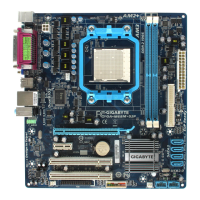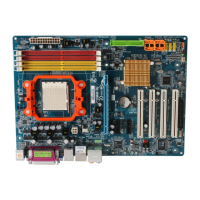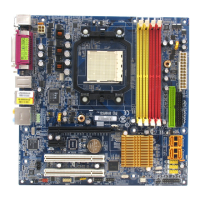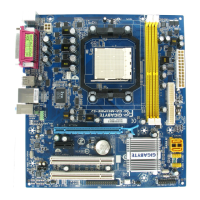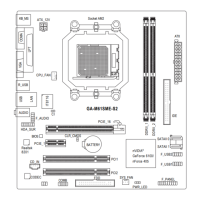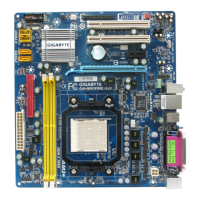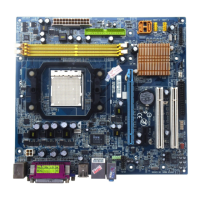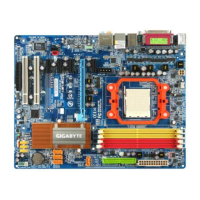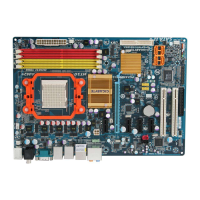Do you have a question about the Gigabyte GA-M68MT-S2 and is the answer not in the manual?
Lists items included in the motherboard package.
Important safety and handling guidelines before installing hardware.
Detailed technical specifications of the motherboard components and features.
Step-by-step guide for installing the central processing unit and its cooling solution.
Procedures for installing RAM modules, including dual-channel configuration.
Advanced settings for CPU and memory overclocking and performance tuning.
Configuration options for system performance, boot order, and security.
Settings for onboard devices like SATA, audio, LAN, and USB controllers.
Options for configuring system power states and wake-up events.
Monitoring of system voltages, temperatures, and fan speeds.
Guide for installing essential motherboard chipset drivers for system functionality.
Instructions on setting up SATA hard drives and RAID configurations.
Lists items included in the motherboard package.
Important safety and handling guidelines before installing hardware.
Detailed technical specifications of the motherboard components and features.
Step-by-step guide for installing the central processing unit and its cooling solution.
Procedures for installing RAM modules, including dual-channel configuration.
Advanced settings for CPU and memory overclocking and performance tuning.
Configuration options for system performance, boot order, and security.
Settings for onboard devices like SATA, audio, LAN, and USB controllers.
Options for configuring system power states and wake-up events.
Monitoring of system voltages, temperatures, and fan speeds.
Guide for installing essential motherboard chipset drivers for system functionality.
Instructions on setting up SATA hard drives and RAID configurations.
| Memory voltage | 1.5 V |
|---|---|
| Memory channels | Dual-channel |
| Number of memory slots | 2 |
| Maximum internal memory | 8 GB |
| Supported memory clock speeds | 800, 1066, 1333, 1666 MHz |
| Processor socket | Socket AM3 |
| Processor manufacturer | AMD |
| Compatible processor series | AMD Phenom II X2 |
| Maximum number of SMP processors | 1 |
| USB 2.0 connectors | 3 |
| Power fan connector | Yes |
| Number of SATA connectors | 4 |
| Number of Parallel ATA connectors | 0 |
| USB 2.0 ports quantity | USB 2.0 ports have a data transmission speed of 480 Mbps, and are backwards compatible with USB 1.1 ports. You can connect all kinds of peripheral devices to them. |
| Audio chip | Realtek ALC888B |
| Component for | PC |
| Power source type | ATX |
| Motherboard chipset | NVIDIA nForce 630a |
| Audio output channels | 7.1 channels |
| Motherboard form factor | micro ATX |
| Motherboard chipset family | NVIDIA |
| Compatible operating systems | Windows XP Windows Vista Windows 7 |
| Supported storage drive interfaces | SATA |
| Graphics card | GeForce 7025 |
| Parallel processing technology support | Not supported |
| Trial software | Norton Internet Security |
| Bluetooth | No |
| LAN controller | Realtek RTL8211CL |
| Networking features | Gigabit Ethernet |
| Ethernet interface type | Fast Ethernet, Gigabit Ethernet |
| BIOS type | AWARD |
| ACPI version | 1.0b |
| BIOS memory size | 16 Mbit |
| Depth | 206 mm |
|---|---|
| Width | 244 mm |


